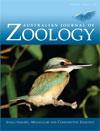Land alteration for intensive agriculture has been a major cause of species decline and extinction globally. In marginal grazing regions of southern Australia, native perennial shrubs are increasingly being planted to supplement pasture feeding of stock. Such revegetation has the benefits of reducing erosion and salinity, and importantly, the potential provision of habitat for native fauna. We explored the use of revegetated native saltbush by the sleepy lizard (Tiliqua rugosa) an endemic Australian species common in the region. We repeatedly sampled revegetated saltbush throughout 2010 and 2011 for adults (n = 55) and juveniles (n = 26). Using genotypes from eight microsatellite loci, parents were assigned to half of all juveniles with high statistical confidence. Parents were sampled in the same patch of revegetated saltbush as their offspring, thus supporting the observation that juvenile sleepy lizards remain within the home range of their parents before dispersal. Most importantly, our findings indicate that revegetated saltbush provides important habitat for T. rugosa at significant life stages – before and during breeding for adults, and before dispersal for juveniles. We conclude that revegetation using simple, monoculture plantations provides beneficial habitat for T. rugosa and may also be beneficial habitat for other native species in human-altered agricultural landscapes.
BioOne.org will be down briefly for maintenance on 12 February 2025 between 18:00-21:00 Pacific Time US. We apologize for any inconvenience.
How to translate text using browser tools
12 October 2012
A direct benefit of native saltbush revegetation for an endemic lizard (Tiliqua rugosa) in southern Australia
Melanie L. Lancaster,
Michael G. Gardner,
Alison J. Fitch,
Talat H. Ansari,
Anita K. Smyth
ACCESS THE FULL ARTICLE

Australian Journal of Zoology
Vol. 60 • No. 3
October 2012
Vol. 60 • No. 3
October 2012
agriculture
biodiversity
microsatellite
parentage
reptile




